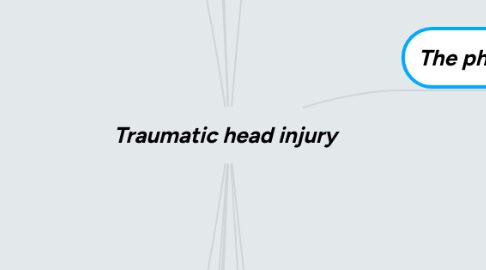
1. -
2. Nervous system
2.1. Central nervous system
2.1.1. Brain
2.1.2. Spinal cord
2.2. Peripheral nervous system
2.2.1. Cranial nerve12pair
2.2.2. Spinal nerve 31pair
2.3. -
2.4. -
3. Anatomy
3.1. -
3.2. Cranial cavity
3.2.1. Anterior cranial fossa
3.2.1.1. Cribriform plate
3.2.1.2. Foramen cecum
3.2.1.3. Anterior and posterior ethmoidal foramina
3.2.2. Middle cranial fossa
3.2.2.1. -
3.2.2.2. -
3.2.2.3. Optic canal
3.2.2.4. Superior orbital fissure
3.2.2.5. Foramen rotundum
3.2.2.6. Foramen ovale
3.2.2.7. Foramen spinosum
3.2.3. Posterior cranial fossa
3.2.3.1. Foramen magnum
3.2.3.2. Internal acoustic meatus
3.2.3.3. Jugular foramen
3.2.3.4. Anterior condylar canal
3.3. Meninges
3.3.1. Dural matter
3.3.1.1. Endosteal layer
3.3.1.2. Meningeal layer
3.3.2. Arachnoid matter
3.3.3. Pia matter
4. Histology of nervous system
4.1. Excitable cell -neurons
4.1.1. Structure of neurons
4.1.1.1. Axon
4.1.1.2. Cell body
4.1.1.3. Dendrites
4.2. Non-excitable cell -neuroglia
4.2.1. Ependymal cell
4.2.2. -
4.2.3. Macrogli
4.2.4. -
4.2.5. Asrtrocyate
4.3. -
5. The physiology of nerves system
5.1. Motor cortex
5.1.1. Primary motor cortex area4
5.1.1.1. Voluntary fine movement
5.1.1.2. Facilitation of stretch reflex
5.1.2. Premotor area area 8 & 44
5.1.2.1. Gross movement
5.1.2.2. Weak inhibitions of stretch reflex
5.1.2.3. Decrease muscle tone
5.1.2.4. Skilled hand movement
5.1.2.5. Inhibit grasp reflex
5.1.3. Supplementary area 6
5.1.3.1. Body wide attitudinal movement
5.1.3.2. Positioning & fixation parts of body
5.1.3.3. Coordination movement
5.1.4. Motor association area
5.1.4.1. Taking decisions to start movement
6. Mechanism of head injury
6.1. Open head injury
6.2. Closed head injury
6.3. Deceleration injury
6.4. Hypoxia
6.5. Tumors
6.6. Metabolic disorder
6.7. Infection
6.8. Stroke
7. Level of traumatic head injuries
7.1. Mild TBI
7.1.1. Glascow coma scale 13-15
7.2. Moderate TBI
7.2.1. Glascow coma scale 9-12
7.3. Severe TBI
7.3.1. Glascow coma scale 8 or less
8. Pathology
8.1. CNS trauma
8.1.1. Skulk fracture
8.1.2. Parenchymal injury
8.1.3. Traumatic vascular injury
8.1.4. Sequelae
8.1.5. Spinal cord injury
9. Skull fracture
9.1. Open
9.2. Closed
9.3. Liner
9.4. Comminuted
9.5. Diastatic
9.6. Depressed from focal blow
9.7. Basilar
10. Herniation of brain
10.1. Subfalicine herniation
10.2. Tonsillar herniation
11. Hematoma of brain
11.1. Epidural
11.1.1. Middle meningeal artery serious injury
11.2. Subdural
11.2.1. Dural venous sinus
11.2.2. Cortical bridging veins
11.3. Subarachnoid
11.3.1. Superficial contusions & lacertion
